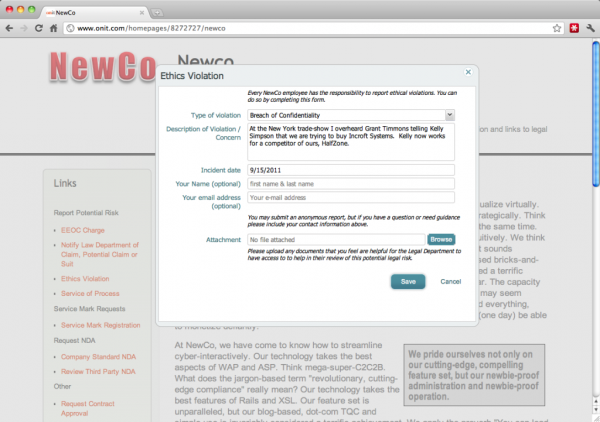
An enterprise, according to Wikipedia is defined as follows:
“A business (also known as enterprise or firm) is an organization engaged in the trade of goods, services, or both to consumers.[1] Businesses are predominant in capitalist economies, where most of them are privately owned and administered to earn profit to increase the wealth of their owners. Businesses may also be not-for-profit or state-owned. A business owned by multiple individuals may be referred to as a company, although that term also has a more precise meaning.”
Clearly, you are NOT an Enterprise! You likely “work” for an enterprise though, and probably find yourself using “enterprise class” software to do your job, such as:
- Enterprise application integration
- Enterprise architecture
- Enterprise automation
- Enterprise cloud services
- Enterprise compliance management
- Enterprise content management
- Enterprise customer relationship management
- Enterprise legal management
- Enterprise management software
- Enterprise resourcing planning
- Enterprise risk management
Having been built to solve enterprise problems though, many of these systems simply get in the way of the work you have to do and in many cases even create more work. As a professional trying to get a job done, you likely end up defaulting to email, documents and spreadsheets to manage and keep track of your work. Think about a lawyer whose job is to negotiate contracts.
 This lawyer spends all day drafting and negotiating licensing agreements and other transactions critical to her company. The enterprise depends upon her to minimize risk and exposure. Her clients, the people she works with, need her to turn work around quickly.
This lawyer spends all day drafting and negotiating licensing agreements and other transactions critical to her company. The enterprise depends upon her to minimize risk and exposure. Her clients, the people she works with, need her to turn work around quickly.
She’s good at her job, is a consummate professional and doesn’t need a lot of help, but it seems crazy that she doesn’t have a simple system that helps her keep track of all the work she’s responsible for, a system that lets everybody she works with know what she’s working on and when to expect it.
Although the work she does is critical to the lifeblood of the enterprise, any enterprise tool she’s seen doesn’t really help her do it! They tend to be way too complicated and try to do too way too much. I guess it’s not surprising given the years of design and implementation spent to produce these comprehensive “best of breed” solutions.
In truth, to get her job done, she doesn’t need “best of breed.” She needs something far simpler than an enterprise contract management system, but significantly “better than email.”
She simply wants a tool for the way she works so she can stay on top of work, keep her colleagues informed and update her boss about her workload and priorities.
You are NOT an enterprise and do NOT have to use enterprise tools to deliver quality service to your colleagues and customers.
Learn how an Onit App can be customized to suit your needs – the enterprise of one.




